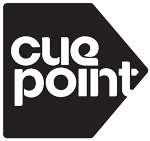I’m inaugurating this columnwith a tape of Kool DJ Red Alert’s pioneering radio show on NYC’s 98.7 Kiss-FM, from June 13th, 1987. This is as classic as it gets. 1987 was a stellar year in hip-hop, with the release of a slew of influential records, including
Paid In Full by Eric B. & Rakim,
Criminal Minded by Boogie Down Productions,
Yo! Bum Rush The Show by Public Enemy,
Bigger and Deffer by LL Cool J,
Saturday Night by Schoolly D,
Down By Law by MC Shan and
Kool & Deadly by Just-Ice. The production aesthetic from ‘86 thru ‘89 was probably the most kinetic ever, with new innovations and styles coming out weekly. ‘87 was something of a transitional year, with vestiges of the trademark production style of ‘86 — programmed beats, scratching and vocals with heavy reverb and delay — morphing into a more sophisticated use of samplers. Producers started incorporating drum sounds from records, percussion patterns and even loops of music and beats.
Red Alert held down Kiss FM and Marley Marl — a trailblazing producer responsible for establishing trends in hip-hop production — was on WBLS up the dial. In ’87 the two DJs were in the middle of their radio beef, which elevated them to rock star status in the Tri-State area. This radio war was reflected in their record selections and the competitive tone of their shows. This competition — which at the time felt very serious — motivated Red and Marley to make their shows as strong as possible so as to not get outshined by the other. To say we looked forward to catching Red and Marley is an understatement.
Press play and read on!
The tape starts at the beginning of the show with the sound of a siren, signaling it’s time for Red Alert. The first song is actually one of Red’s signature promos “The TR-808 is Coming,” created by the closely-affiliated Boogie Down Productions crew, featuring a very young D-Nice — who, in addition to rapping on the track, produced it. Following at 3:30 is “Hey Love” by King Sun and D-Moet, a shaker-heavy love rap that samples the Art of Noise’s “Moments In Love.” At 16:00 Red plays another promo-turned-record “Red Alert Is A Great Man” by The Mighty Mitch-Ski the Rappin’ Comedian, followed at 19:27 by an unreleased, cassette-only version of “The Ruler’s Back” by Slick Rick which Def Jam gave to key radio DJs to air.
In the 80s, as common as it was for hip-hop production styles to become trends, it was considered a sin for an MC to bite. The greats all had unique styles, but not everyone was completely original. At 22:55 Red drops Sparky D’s “Sparky’s Back,” which sounds like the MC was riding LL Cool J a little hard. At 28:26 Red drops a show ID by Baby Chris and the Violators. Chris was the “fourth Jungle Brother” — another member, Mike G, was Red’s nephew. “Baby” Chris Lighty would later become one of the rap industry’s most powerful managers, guiding the careers or 50 Cent, Busta Rhymes and others under his management company Violator. The outfit was perhaps the only visible alternative to Rush Artist Management which, back in 1987, had a virtual monopoly on any rap group or solo artist, including Run-DMC, Eric B & Rakim, Public Enemy, Beastie Boys, Stetsasonic, LL Cool J… you get the picture.
At 30:45 the B-side begins in the middle of a Red Alert staple, Boogie Down Productions “P is Free Remix,” followed by LL Cool J’s classic “I’m Bad.” At 37:42, Kiss host JR Vance gets on the mic and lets the listeners know they’re in the middle of a “Kiss-FM Saturday Night Mastermix Dance Party,” which was technically the name of the show that Red DJed on. Black radio in ‘87 had a confused relationship with hip-hop, and Kiss-FM clearly hadn’t embraced it wholeheartedly.
Next, Red drops Boogie Down Productions’ “The Bridge is Over,” a cannon blast aimed at Marley and Shan and their home, Queensbridge. A weekend wouldn’t go by without Red doubling this up with his simple, funky signature scratches. Following this upper cut is a jab by The Mighty Mitchski, who again shows his devotion to Red Alert on “Brooklyn Blew Up The Bridge” while further dissing Shan and attempting to forge a musical alliance between Brooklyn and the South Bronx. The chorus cleverly samples “Brooklyn” from Cutmaster DC’s “Brooklyn in the House,” MC Shan’s “The Bridge” and “South Bronx” from Boogie Down Productions.
Next up, at 48:40, Red cuts in his own voice, introducing Black, Rock and Ron as some “brothers from Hollis” who he was feelin’. “That’s How I’m Livin’” — produced by hip-hop pioneer Jazzy Jay (Red’s cousin) and engineered by the late Paul C — got a lot of burn by Red, who was probably diggin’ it because of the huge bassline from the club staple “Heartbeat” by Taana Gardner. Red next drops another Jazzy Jay production called “We’re Troopers” by BZ2 MCs, a quirky joint that really sounds like nothing else out at the time. Red then plays the shaker-heavy “Tramp” by Salt-n-Pepa and the R&B-infused “Falling in Love” by the Fat Boys.
This tape is just a little over an hour of what was a two hour show, but it’s a fine snapshot into the center of the hip-hop universe in 1987, namely New York City. Red was a tastemaker, a record breaker and a star in his own right. The songs he selected, the creative, often hilarious radio promos that every relevant artist would record for him, plus his charismatic personality and original slang (though he doesn’t talk on this tape) come together to make Kool DJ Red Alert’s show on Kiss-FM an essential piece of hip-hop history and cassette culture. And as they used to say… Peace!
Follow Stretch Armstrong on Twitter @StretchArmy.


